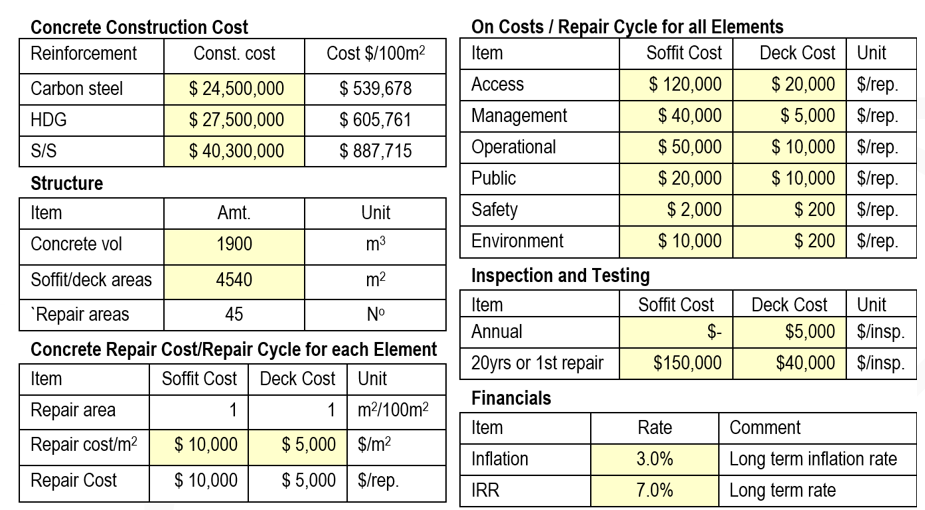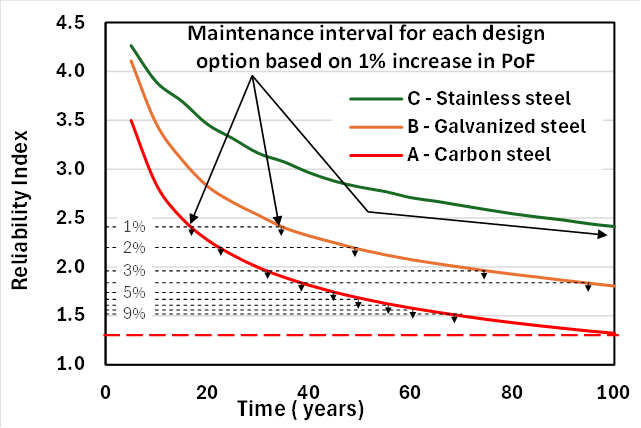
Life-Cycle Cost Analysis and Sustainability in Construction
Adopting sustainable practices for new structures is not just an environmental responsibility but a strategic approach to ensure their long-term viability and resilience. BCRC have made the point at many conferences that full probabilistic analysis (FPA) is currently the only approach to modelling durability as no other method calculates the likelihood of failure (i.e. corrosion initiation). While achieving a reliability of 1.3 at the end of the design life is deemed acceptable for most serviceability limit states it may not give the most economic cost over the deign life because it does not take into account the cost of minor repairs that are expected. If designed and constructed appropriately major repairs should not occur.
BCRC recently undertook a Life-Cycle Cost Analysis (LCCA) for a major jetty construction to compare the potential cost of different covers, mix designs and reinforcement types. In this case the construction costs were given by the contractor and the unit cost of a repair were assessed by BCRC based on accessibility. Operational and public costs can be the most significant part of a repair and hence these costs should be developed in conjunction with the client. On this project they were not major inputs. The client should also provide finance rates. 
A critical aspect of the analysis is how frequently repairs will be required. In this case BCRC proposed assuming repairs would be undertaken when the probability of failure (PoF) for corrosion initiation increased by 1%. This was consistent with maintaining visual appearance more than structural concerns. As PoF is related to reliability the FPA provides the repair interval as shown in the reliability with time graph (standard FPA output) below. It compares the use of different reinforcement types for the same mix and cover. This was a small part of the much larger number of options considered.
The graph shows that stainless steel has such a high reliability that even at 100 years, no repairs were envisaged. The number of repair cycles increased to four for galvanised steel, and to around 12 for carbon steel. In this case repairs for carbon steel became so frequent that they were not tolerable, but by improving concrete performance and cover carbon steel was the lowest whole of life cost. On other projects where operational or public costs are high stainless steel may become the lowest cost.
Clearly FPA provides whether the reliability at the end of the design life is adequate but also, for any design approach, what the repair cycle and number of repairs for each cycle might be. BCRC’s Frank Papworth will be presenting this and other sustainability aspects for infrastructure at PIANC2024 in Sydney on 28 August.


